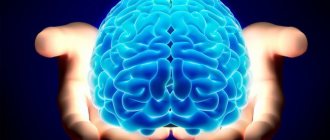Currently, psychologists offer many techniques for improving one’s abilities, finding inner harmony and choosing a special path to happiness. Neurobics, art therapy, coaching, mnemonics, Hellinger constellations, socionics and many other areas. One of these, incredibly popular and at the same time controversial, is NLP - neurolinguistic programming (not to be confused with neurolinguistics).
On the one hand, his techniques are actively used in almost all spheres of modern life. On the other hand, it is harshly criticized, considered an ordinary guide to manipulating people. So what is it really?
What it is
NLP is a direction in psychotherapy and practical psychology that uses verbal and non-verbal behavior of a person in order to achieve the desired result from him. For example, with the help of neurolinguistic programming, parents can teach their child order or punctuality, teachers can improve the learning efficiency of pupils and students, managers can force the buyer to purchase a product. In this case, forms of speech, eye movements, body postures, and memory are used.
NLP was developed back in the mid-twentieth century by J. Grinder and R. Bandler, but it has gained maximum popularity in our days. Officially, this direction is recognized as parascientific, since the effectiveness of the techniques, firstly, has not been proven, and secondly, is not always ethical from a moral point of view.
Many scientists believe that NLP is nothing more than the art of manipulating people through their own behavior.
How it works
A person cannot perceive the world around him objectively, since he passes it through his own sensations (visual, auditory, olfactory), through the prism of acquired experience, personal beliefs and principles. Some people cannot live without church, others openly hate religion. Some are looking for a job that pays more, while for others it is more important that they like it. Some people like external beauty in people, others are delighted with the mental abilities of the interlocutor.
According to NLP, if you take into account all the above points and understand how a particular person passes information through himself and what is of particular importance to him, using certain techniques, you can achieve anything from him. But first, painstaking work must be done with beliefs and physiological characteristics.
If a manager persistently persuades a church-going grandmother to buy goods with demonic symbols, he will fail. It is necessary to offer an alternative option in time so that the purchase turns out to be pleasant for her and brings benefits to the company. This is where NLP techniques such as emotionally meaningful words and creating positive expectations come into play.
If an employee sits in a closed position (arms and legs crossed), it is difficult to demand increased productivity. But, having mastered the mirroring method, you can open the pose and talk more naturally.
What can you really learn by mastering NLP techniques?
Firstly, and this is perhaps the most important thing, to better understand other people, their needs and requirements, and be able to clearly convey your thoughts to your interlocutor. Often a person cannot immediately clearly and intelligibly express what he would like to say.
The ability to ask the right questions not only helps another person clarify thoughts and structure ideas, but also significantly saves time and effort by asking the right questions and obtaining better information than is obtained in a regular, unstructured conversation.
Secondly, NLP is a purely practical thing, i.e. it needs to be learned by practicing skills until they are fluent and immediately applying them “in practice”, i.e. on practice. Learning from books and training is the same as the difference between a person who can only translate a foreign text with a dictionary and another person who speaks this language fluently, as if it were their native language.
For example, many people have heard that before moving on to discussing serious issues, it would be good to first establish a relationship with the interlocutor, i.e. reach mutual understanding. In NLP this is called “establishing a report.” However, attempts to blindly copy all the gestures and movements of the interlocutor usually only amuse others and look ridiculous.
This does not mean that the technique does not work - you just need to practice the skill to the point of automatism, when adjustment to the interlocutor begins to occur without being conspicuous by its unnaturalness, but naturally and naturally. It is to practice theoretical skills that trainings are conducted.
In addition to all of the above, NLP also has techniques - i.e. algorithms consisting of a set of steps. Each such technique is designed to solve a specific range of problems.
For example, the “three-position description” technique helps to look at any difficult situation not only from your own point of view, but also “through the eyes of another person” or even from the position of the team as a whole, a manager or business owner. The use of this simple technique helps to more effectively resolve conflicts that arise or explain to people their mistakes in a way that is more acceptable to them.
Another useful NLP idea is “calibration”, i.e. the ability to carefully observe the people around you (and even yourself) and notice small details that usually escape people’s attention.
In particular, a conflict usually begins for a reason, but with subtle signs that the other person is starting to get angry - first he tenses up, then he may turn purple from pent-up anger, and only then, if he is completely pissed off, he begins to scream.
Unfortunately, despite the obvious need to notice this reaction of the interlocutor and change their behavior depending on it, many people do not pay attention to obvious signs until the very last minutes, for example, focusing on themselves and their thoughts.
A typical sign of this is the phrase: “I don’t understand what happened... I just told him that..., and then he literally exploded...” The ability to notice the mood of the interlocutor helps to better find mutual understanding with people around him, build long-term relationships based on mutual sympathy and respect.
You can also notice what characteristic signs your own anxiety reveals to others in inappropriate situations and make sure that this does not happen again.
In the process of studying NLP, you train not only attention to detail, but also the ability to describe them in such a way as to make it understandable to another person. For example, if you say “She looked at me disapprovingly,” then this is non-specific. If you ask, it may turn out that at that moment the interlocutor actually had a toothache or she remembered some of her problems, and you attributed all this to your own account.
If you carefully observe those employees with whom you regularly communicate, you begin to notice that, for example, one of them raises his left eyebrow before getting angry, another starts clicking a ballpoint pen, and a third starts clenching his hands into fists. .
Once you have identified such signs, if you notice them in time, you have a chance to take corrective action and, in some cases, prevent conflicts from arising. NLP also has techniques that focus on finding win-win solutions that benefit both parties involved in negotiations, so it's not just about observing others, but also about actively working with people and with yourself.
Basics
Where to start learning neurolinguistic programming? There are basic, basic techniques that were developed half a century ago by J. Grinder and R. Bandler and continue to be improved to this day. First you need to master them theoretically, so that you can then learn to apply them in practice.
1. Subjective experience: a person’s past, which has a huge influence on him.
2. Presuppositions - semantic components of NLP:
- the map is not yet the territory;
- consciousness, like life, is a systemic process;
- positive intention is the basis of any behavior;
- rapport (building trusting relationships);
- feedback, not defeat;
- and many others.
3. Representational systems: how a person receives information mainly from the outside (visual, auditory, kinesthetic and discrete images).
4. Metamodels and metaprograms.
5. Milton models: empty information that a person fills in himself in accordance with his beliefs, desires, and principles.
Access Keys: A single thing or phrase can force a person to take an action.
These are the basic theoretical principles of NLP. Without mastering them, achieving results in practice will be extremely difficult. You can find their detailed descriptions in popular science literature (the list is given below).
NLP techniques that produce results
After mastering the theory, you can move on to practice. Recommended techniques for beginners that, when used correctly, work flawlessly:
- mirroring (exact repetition of movements, facial expressions, poses, intonations of the interlocutor);
- rapport through the pronoun “we”;
- three "yes";
- pattern break;
- switching attention;
- reframing;
- anchoring;
- thought virus;
- adjustment, etc.
It remains to be seen how exactly each technology from this list works in specific situations.
Areas of application
In different areas of life, NLP suggests using different methods of influencing a person.
In sales
The modern market is oversaturated with goods and services. The competition is unimaginable. And for some reason, some stores and brands thrive and stay afloat for decades, while others disappear within a couple of months after opening. You can endlessly look for mistakes and blunders of the latter, but today they are increasingly saying that some people simply know how to use techniques to manipulate people (read: customers and clients), while others have not even heard of it. The former become successful, the fate of the latter is to sink into oblivion.
A step-by-step guide to how salespeople, managers and merchandisers use NLP techniques.
1. Establish a rapport (trust relationship) with the buyer through:
- mirroring;
- open poses.
2. Focus the buyer’s attention on a specific product through:
- shaking (as soon as he loses interest, you need to raise your voice, change your position, change the topic);
- involvement in joint activities, cooperation (“we will now look at the settings of this phone together”);
- creating positive expectations (“you won’t regret buying it”).
- unfinished action (make a riddle out of a product that can only be solved by purchasing it);
- emotionally significant words: benefit, inexpensive, promotion, discount, sale, bestseller, low prices, etc.
3. Call on the buyer to take active action using methods such as:
- the need to make an urgent decision: “in 2 hours the promotion will end”, “there is only one copy left”;
- illusion of choice: “choose which model you buy - this or that” (automatically the buyer’s consciousness refuses the obvious choice “I don’t buy anything”);
- future planning: “choose, and I’ll take you to the checkout”, “choose, I’ll issue a discount/coupon for a bonus card in the meantime.”
To increase sales, NLP techniques are actively used in advertising:
- working for generally accepted values (in every second advertisement we see the image of an ideal family or a successful businessman);
- submodalities: with the help of visual pictures and verbal formulations, the subconscious is influenced (a juicy dish increases appetite, a half-naked girl interests men);
- presuppositions: such formulations that exclude the choice of another product;
- synesthesia: simultaneous connection of several channels of perception;
- truism: verbal formulations that evoke the authenticity of a fact, even if it is false (“cardiologists recommend”, “approved by the world association”);
- thought virus: creating a trail of mystery around a product.
As practice shows, NLP techniques provide high sales growth.
In a relationship
Experts believe that with the help of NLP you can make any person fall in love with you. How to do it?
- Anchoring
When talking to the target, make him remember something pleasant. From now on, when he sees you, he will experience only positive emotions.
- Adjustment
Study the clothing style and demeanor of the star your subject admires. Don't copy the image completely, but learn a couple of points and use them in communication.
- Mysteriousness
Don't tell everything about yourself. Leave some side unclear, but constantly bring your object of adoration to this mysterious door, as if inviting you to come in, but do not open it. The desire to solve the riddle will lead to building the relationships you dream of.
In love, it is also useful to use NLP techniques. The main thing is not to overdo it with them and not switch to naked manipulation of your loved one.
Neurolinguistic programming techniques for women:
- ideal dates, thought out to the smallest detail (from the tablecloth on the table to aphrodisiacs);
- beautiful, exciting external image (men love with their eyes);
- the rule of three “yes” (formulate three questions so that the man answers “yes”; to the fourth question, which is important to you, he will automatically answer the same);
- correct motivation: “you are the best”, “you will achieve everything”;
- disarming: demonstrating one's weaknesses, tears to evoke pity.
NLP techniques for men:
- illusion of choice: “Where should we go today - will we take a walk in the park or sit in a cafe?” (although in reality she was going to a friend’s place);
- “plus or minus”: first cause a slight negative reaction in the girl (look after the beauty), then a strong positive one (buy a gift, say a lot of compliments).
Experts warn that techniques for manipulating consciousness in relationships must be used extremely carefully so as not to slip into faceless and cruel control.
In education
Teachers in schools and other educational institutions can also actively use NLP:
- provide information in the form in which students perceive it better: some through the eyes, others through the ears, others through tactile sensations;
- use visualization as often as possible;
- anchoring: if the teacher raised his hand, everyone should be silent;
- speech strategies: to attract attention, raise your voice, fail to finish a sentence, become abruptly silent, create an aura of mystery (“read at home what happened between Onegin and Tatyana in the gazebo”);
- positive comments;
- jokes, humor (but not ridicule or humiliation).
Those teachers who use NLP methods in their work note their incredible effectiveness. They allow you to establish connections with children, help you learn the material faster, and be more attentive.
Combat
Now the so-called combat NLP has become widely used. If you think it's designed for warfare, you're wrong. It is used in everyday life, but not for peaceful purposes. This concept hides the use of psychotherapeutic techniques for the purpose of aggressive and deep influence on a person, outright manipulation. The result is a zombie man who, without hesitation, carries out any order.
Combat NLP is actively used in politics (in election campaigns), business, network marketing, when recruiting people into sects, criminal communities and informal groups.
People become its victims:
- with low IQ, no education;
- with suicidal tendencies;
- weak-willed;
- those who are deeply depressed;
- with neurotic disorders;
- infantile
- naive and gullible.
Professionals in the field of combat NLP immediately pick out such people from the crowd based on special characteristics and begin to process them. The victims are teenagers, old people, maximalists, religious fanatics, and marginalized people. It is because of this trend that many criticize and do not accept neurolinguistic programming techniques, considering them aggressive, sometimes even illegal, unethical and inhumane.
If you have become a victim of aggressive NLP, you must resist the manipulator. We have already told you how to recognize it and not succumb.
Where can these techniques be applied?
The methods and techniques of this amazing system work amazingly effectively. This is sometimes the danger. Knowledge in itself is neutral, but the scope of its use can be both a plus and a minus. Therefore, like many other discoveries, NLP techniques can, unfortunately, be used by “specialists” with a bad conscience to create various totalitarian structures, sects of controlled people.
However, the reality is that we do not live in society in isolation, but exchanging impulses, influencing each other, sometimes quite harshly.
Can a teacher conduct a lesson without manipulating his students to some extent? Is it possible for a company manager to manage a team without influencing it?
Or maybe you managed to put your naughty son to bed without having to carry out complex maneuvers and bargaining?
I doubt it. Personally, I take manipulation quite calmly. While studying NLP, I learned to track such attempts. If a manipulator tries to act to my detriment, I do not get annoyed, but ignore or simply play with him.
Let's say when your daughter in a supermarket, walking past shelves with bright toys, suddenly tries to tell you how lucky she is to have her parents. This is also manipulation and much more subtle than the banal throwing of a tantrum. So manipulation and manipulation are different, and there are benefits from them (the daughter will still receive a new doll - I think few will be able to resist).
The simple use of neurolinguistic programming techniques helps resolve conflicts or prevent their occurrence, that is, produce high-quality communication.
In addition, NLP is not esotericism, not a collection of knowledge accessible to a select few, not shamanism, but psychological techniques carefully collected into a system that really help modern man in learning, in love and in business.
After all, NLP is a tool like a hammer, knife or drill. You can use them to build a house, or you can injure a person. It all depends on how to apply them.
Anchoring technique
There is one catchphrase and popular phrase among specialists in neurolinguistic programming: “When we say “anchor” we mean “NLP”, when we say “NLP” we mean “anchor”. Many people are familiar with this technique and even often use it in their lives, but few people know that it is based on the principles of the technique in question.
What it is
To put it in simple terms, in every person’s life there are several anchors that tie them to either negative or positive emotions.
Some people can’t look at watermelons because as a child they overate them to such an extent that they ended up in the hospital. The long-legged blonde secretary took her husband away from the family - and now all women of this external type and this profession will only cause negativity. These are anchors with a minus sign. And there are them with a “plus” sign. For example, each of us has our “own” song, which is associated with pleasant memories. They themselves may be erased from memory, but a pleasant feeling will arise again and again when listening to it.
Where is it used?
The anchoring technique is used everywhere in life. For example, miracle pills that supposedly cure alcoholism. In fact, this is an ordinary emetic, which, according to the instructions, should be drunk after drinking alcohol. A negative anchor is imprinted in a person’s consciousness: if he drank alcohol, he started vomiting. This is how a stable rejection of this connection is developed. To get rid of the second point, you need to eliminate the first.
Examples of anchors
Couples in love actively use anchors to strengthen their relationships:
- favorite song to which they met (kissed, confessed their love to each other);
- a dish they traditionally prepared for a romantic evening;
- beautiful underwear;
- some specific phrase, the meaning of which is clear only to them.
But, if a couple breaks up, all these anchors radically change to a minus sign. Once favorite places for solitary walks, songs, objects can cause pain due to loss.
Use in practice
How can this technique be used in practice? Anchors are designed to replace negative emotions with positive ones.
Dentistry
It is unlikely that there will be people who experience positive emotions in the dentist’s chair. The unpleasant smell of medicine, the sound of a drill, an uncomfortable position, pain, injections of local anesthesia - there are more than enough such moments. However, they can be blocked using an anchor with a plus sign. Surely you have a favorite scent that brings back pleasant memories. Maybe the smell of apples makes you fly away. Or love the way the sea smells. For some it is Chanel No. 5 or Hugo Boss. Every time before going to the dentist, put a drop of appropriate perfume or essential oil on a cloth handkerchief. As soon as you feel bad, bring it to your face.
In love
In the most pleasant moments of a relationship (during a romantic date, watching a movie together, riding a Ferris wheel, a solitary walk), unobtrusively perform the same action towards your loved one. This could be: circular movements of your finger over his palm, lightly stroking his wrist (elbow, earlobe), clasping your hands in a “lock,” a gentle kiss on his temple.
Constant repetition of the same thing at such moments is anchoring on positive emotions. And it will come in handy during quarrels or when you need something from your partner. Are you arguing and can’t calm him down? Doesn't he agree to go to your mom's this weekend? Walk up and play the anchor. If you did everything right before, you will be surprised how quickly your loved one will compromise.
In progress
Most of the stress of a modern person is related to work. Tough bosses who demand unrealistic results, colleagues who are always gossiping and don’t let you work in peace, deadlines and time pressure drive many people crazy. This is where the NLP technique comes in handy. Carry with you something that is associated with your most pleasant memories. It could be an engagement ring, a bracelet with the Eiffel Tower from Paris, or the same handkerchief with your favorite scent. During a stressful situation, take 30 seconds to inhale a familiar smell or touch a piece of jewelry. Anchoring will occur and you will calm down.
Professional anchoring
Psychologists, psychotherapists and NLP specialists often use artificial anchoring techniques in their practice. It is deeper than what a person spends on his own, since there first there is an overlay of positive emotions on negative ones, and then a persistent substitution. This is done in just a few steps.
- A person remembers down to the smallest detail the most unpleasant moment in his life.
- At that moment when he experiences pain, fear, discomfort, the specialist anchors him - takes him by the left wrist.
- After some time, the person is invited to relive the happiest moment of his life.
- As soon as he achieves positive emotions, the specialist again anchors, but in the opposite way - he squeezes his right wrist.
- When both points have been worked out and fixed in the person’s consciousness, while reproducing pain and loss, the specialist takes the person by the right wrist - the pain point in the soul is thus blocked and covered with an anchor with a “plus” sign.
If everything was done correctly, negative memories and emotions regarding a particular moment should disappear.
Word embeddings
Let's take a closer look at what embedding is.
Roughly speaking, embedding is a concise representation of the context of a word. Why is it important to know the context of a word? Because we believe in the distributional hypothesis - that words with similar meanings are used in similar contexts. Let's now try to give a strict definition of embedding. Embedding is a mapping from a discrete vector of categorical features into a continuous vector with a predetermined dimension.
The canonical example of embedding is word embedding (word embedding).
What usually acts as a discrete feature vector? A Boolean vector corresponding to all possible values of some category (for example, all possible parts of speech or all possible words from some limited vocabulary).
For word-form embeddings, this category is usually the index of the word in the dictionary. Let's say there is a dictionary with a dimension of 100 thousand. Accordingly, each word has a discrete vector of features - a Boolean vector of dimension 100 thousand, where in one place (the index of a given word in our dictionary) there is a one, and in the rest there are zeros.
Why do we want to map our discrete feature vectors to continuous ones of a given dimension? Because vectors with a dimension of 100 thousand are not very convenient to use for calculations, but vectors of integers with dimensions of 100, 200 or, for example, 300 are much more convenient.
In principle, we need not attempt to impose any further restrictions on such a mapping. But since we are building such a mapping, let’s try to ensure that the vectors of words with similar meanings are also close in some sense. This is done using a simple feed-forward neural network.
Exercises
Many people who are only superficially familiar with NLP believe that it is primarily a technique for manipulating people. Unfortunately, this opinion was formed in the conditions of modern society, in which every successful person must be able to achieve his goals by any means. Initially, neurolinguistic programming was developed as a method of helping those who suffer from their own imperfections, complexes and self-criticism. It is actively used by many psychologists to restore mental balance and increase self-esteem. But you can do it yourself.
Find useful practical applications for NLP - get rid of your own cockroaches in your head by mastering just a few exercises.
“It’s not an elephant, it’s a fly!”
Agree that most problems are actually a snowball. It is human nature to constantly think about what worries him, to examine this something from all sides, looking for some new facets. Speculation, doubts, fears grow and any minor unpleasant incident turns into a huge insoluble tangle of difficulties.
There is an exercise in NLP that suggests going the other way and turning this scary, bloated elephant into a small and meaningless fly.
- Create a relaxing atmosphere. Make sure no one disturbs you.
- Imagine in every detail the thing (event) that worries you: how you were fired, how you lost your wallet, how you got divorced. This should be the brightest picture possible.
- Now desaturate it so that it resembles a vintage black and white photograph.
- Begin to mentally move it further and further away from your inner gaze until it turns into a point on the horizon.
- Peer at it, try to consider the details until you get tired and get tired of it.
Last step. Now find something positive in your life that is much bigger than this problem. For example, you were fired, but your children are alive and well. If something happened to them, it would be a hundred times more painful. Lost your wallet? But you have a solid NC on your card. You didn’t become a beggar and a homeless person after that. Divorced? Didn’t it become easier to breathe after that and didn’t you have more free time for yourself?
In short, NLP suggests turning the bad elephants in your life into worthless flies. Try it yourself and see the incredible effectiveness of the exercise.
"Big Wash"
This exercise works great if a particular picture does not allow you to live in peace. It happens that after an unpleasant situation you want to forget about it as quickly as possible, but in your mind it keeps popping up in the smallest details of how it all happened. Because of this, people cannot fall asleep, eat peacefully, or communicate. No amount of distracting maneuvers (throwing yourself into work, for example) helps. This means it’s time for neurolinguistic practice.
- Don't artificially evoke a disturbing memory. Wait for the moment when it comes to mind on its own.
- Don't drive him away, don't try to hide from the problem.
- Mentally imagine this picture as a dirty spot on your clothes. Set yourself the task of cleaning it up.
- Imagining everything in detail, in your thoughts take out a bowl of water, pour the best bleach into it, add powder and start zealously washing this picture.
- Imagine how the spot becomes lighter and lighter, and then completely disappears.
Psychologists and psychotherapists suggest performing the neurolinguistic exercise “The Big Laundry” for paranoia and obsessive thoughts.
"The Musketeers 20 Years Later"
One of the simplest and most effective NLP exercises, allowing you to see how insignificant the problem is that now prevents you from living in peace and interferes with happiness. Many people practice it without even realizing that it belongs to the technique of neurolinguistic programming.
- Relive an exciting event. For example, my son brought a bad grade from school. Or your roof is leaking, but you don’t have money for repairs yet.
- Imagine yourself 20 years later. It should be a beautiful dream, but as close to reality as possible. That is, you should not imagine yourself as the wife of an oligarch or the President if there are no prerequisites for this.
- Enjoy the created illusion.
- Now find today’s problem in your dream. Do you think in 20 years this “two” will be just as relevant? Will it affect the development of your life, will it prevent you from moving towards your dream? And you are unlikely to remember about the roof years later.
So everything is relative. Even if a child fails an exam, it doesn’t mean anything. He will retake the test in a year, go to work, and achieve everything in this life himself through this difficulty. Not to mention the worthless D in math class. Yes, it's unpleasant. But do some educational work (in calm tones) and forget about it forever.
To restore mental balance and achieve harmony within yourself, NLP also offers other exercises:
- “Thank you, Lord, for taking me with money!” (to solve financial problems).
- “Retrospective” (studying the horrors of wartime to realize one’s own happiness).
- “Waving technique” (changing a negative image to a positive one).
- “Cinema” (a look at the problem from the outside).
- Technique from Walt Disney (what happened must be seen through the eyes of a dreamer, a realist and a critic).
What problems can NLP solve today?
Machine translation of texts from one language to another
This is one of the most common scenarios. However, despite the significant progress of machine translation, modern solutions still do not always cope with the translation of stable phrases, puns, as well as the selection of suitable cases and the correct construction of sentences.
Text analysis
Text analysis is implemented in three main formats: classification, content reflection and sentiment analysis.
All text classification tasks can be divided into two types:
- binary classification allows you to determine the relevance of the document offered to the user;
- multiclass classification allows you to determine the topic of a document and assign it to one of hundreds of thematic classes.
Reflection of text content (text summarization) works like this: the NLP system takes large text as input, and outputs smaller text reflecting the content of large text.
Middle/Senior Data Scientist (ASR)
"Group of companies TsRT", St. Petersburg, you can remotely
tproger.ru
Jobs on tproger.ru
For example, the machine may be required to generate a text summary, title, or abstract. You can read a little more about text generation in the material “Generating fake news headlines in Lenta.ru style” with a detailed analysis of the ways in which neural networks can be trained to create headlines that are meaningful and funny for human perception.
Finally, sentiment analysis allows you to find opinions in the text and identify their properties. Which properties will be studied depends on the task at hand. For example, the goal of the analysis may be the author himself - sentiment analysis determines his typical style, emotional coloring of the text, etc.
Speech recognition and synthesis
Speech recognition is the process of converting a speech signal into digital information, such as text. Speech synthesis works in the opposite direction, generating a speech signal from printed text.
Speech synthesis and recognition are used in a variety of areas, for example, in the work of voice assistants, IVR systems and smart homes.
Development of dialogue systems
Dialogue systems can be considered:
- smart assistants (Yandex.Alice, Siri, Alexa);
- chatbots are text systems that follow dialogue scripts (Svyaznoy bot, Facebook Messenger);
- QA systems.
All of them rely on NLP tools: speech recognition, extracting meaning, context, determining intent, and then building a dialogue based on the above (ideally through speech synthesis).
Identification of entities and facts
Another popular NLP task is extracting named entities (Named-entity recognition, NER) from text. Let's imagine that we have a continuous text about the purchase and sale of assets, and it is necessary to highlight persons, as well as dates and assets.
Against the background of growing analytical forecasts, billionaire Ivan Petrov bought a controlling stake in 1999.
NER's task is to understand that the section of text "1999" is a date, "Ivan Petrov" is a person, and the "block of shares" is an asset.
Without NER, it’s hard to imagine solving many NLP problems, for example, resolving pronominal anaphora or building question-answer systems. If you ask the question “Who played the role of Batman in the film “The Dark Knight”” in a search engine, then the answer is found precisely by identifying named entities: we select the entities (film, role, etc.), understand what is being asked, and then search the answer is in the database.
The NER problem statement is very flexible. You can select any necessary continuous fragments of text that are somehow different from the rest of the text. As a result, you can select your own set of entities for a specific practical task, process texts with this set and train the model. This scenario is common and makes NER one of the most frequently solved NLP problems in the industry.
This is what a similar project looks like for a large oil company. The customer was faced with the task of preparing data on assets: industrial installations, operating equipment, as well as measurement and control equipment. The data sources were text documents—technical regulations that most fully describe technical processes and necessary production facilities.
We demonstrated the possibility of using ML and NLP technologies to extract information from a text description (and form equipment profiles based on it). The generated profiles were compared with the results of manual mapping, taken as a standard - the achieved accuracy was 97.3%. The approach can significantly reduce labor and time costs, as well as minimize the risks associated with manual text processing errors.
The best books on NLP
- Balyko D. Zapretov.net. 40 NLP rules for living a high life.
- Bandler R., Grinder D. From frogs to princes. Neuro-linguistic programming.
- Bandler R., Grinder D. Reframing: personality orientation using speech strategies.
- Berger E. NLP for happy love. 11 techniques that will help you fall in love, seduce, marry anyone.
- Beaver D. How to quickly absorb a large amount of knowledge. Let's learn without pain. The latest NLP methods.
- Bodenhamer B., Hall M. NLP practitioner. Full certified course.
- Davydova I. NLP for business and life. The art of hypnotic persuasion.
- J. O'Connor. NLP. A practical guide to achieving the results you want.
- Dilts R. Modeling using NLP.
- Pligin A. How to turn the ghost of failure into the aroma of success in life.
Before using NLP to influence other people, check how the technique works for yourself. You should start by changing your own life for the better, creating an ideal “I-image”, and then experiment in society.
You may also be interested in:








